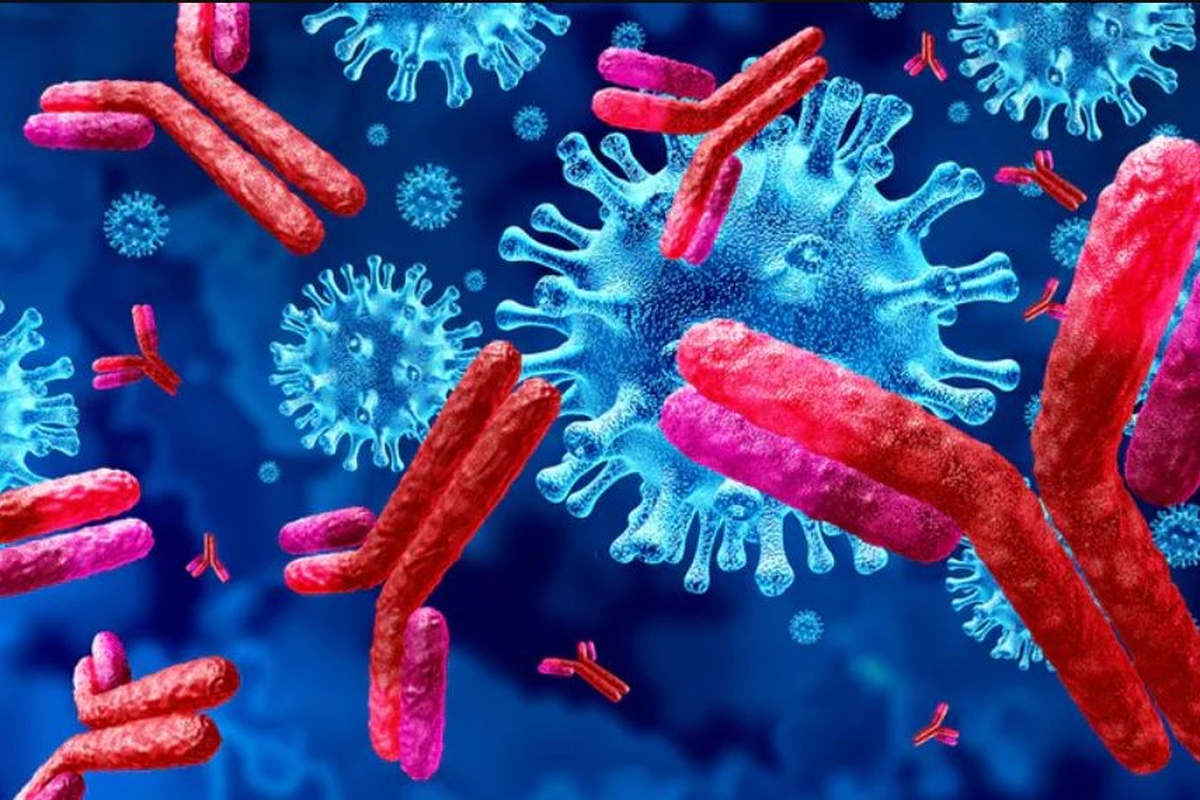Jean-Marc Sabatier, Director of Research at the CNRS and Doctor of Cell Biology and Microbiology, has doubts about mandatory vaccination. Because vaccines have lost their initial effectiveness. And the Omicron variant, although contagious, does not cause serious forms of the disease.

The new variant of SARS-CoV-2, named Omicron, has the world in a panic. What do we really know about this variant ?
Current data are still fragmentary. But we will soon know, probably within two weeks, if this new variant of SARS-CoV-2 will supplant the widespread Delta variant.
However, it has been established that this Omicron variant causes only mild or even moderate forms of Covid-19 disease. This is rather reassuring and is in line with the logic of the behavior of viruses: during their mutations they generally become more and more infectious but they lose their virulence and do not give serious or lethal forms.
Another particularity of the Omicron variant is that the 32 mutations described in the Spike protein give it a certain resistance to current vaccines. This justifies even less the mass vaccination imposed by the health authorities. This is particularly true for children between 5 and 11 years of age, who may be infected by the virus, but only exceptionally develop severe forms of the disease and only in the presence of comorbidities. For them, as for the rest of the population, compulsory vaccination is inappropriate during a pandemic.
Can you explain how the SARS-CoV-2 virus affects our bodies ?
The SARS-CoV-2 virus affects our bodies by disrupting a major physiological hormone system called the renin-angiotensin system (RAS). This system is responsible for the functioning of our organs and tissues. It is ubiquitous in the body as it is found in the heart, lungs, kidneys, liver, vascular system (blood vessels), pancreas, spleen, sexual organs (endometrium and testicles), intestines, skin, and even the brain. It is a very complex system that is essential to the proper functioning of the human body, and of mammals in general. It also controls the immune response (innate immunity) by acting directly on certain types of immune cells (monocytes, macrophages, granulocytes, dendritic cells, “killer” NK cells). SARS-CoV-2 interferes with (and disrupts) the RAS because its spike protein -which is a viral surface protein- is able to interact with a cellular receptor (called ACE2 = angiotensin-1 converting enzyme) involved in the functioning of the RAS. This disruption of the RAS (induced by the virus) leads to an increase in the concentration of a hormone: angiotensin-2. This angiotensin-2 in excess will overactivate its own receptor which is AT1R. It is this AT1R receptor that is responsible for the Covid-19 diseases seen in people infected with the virus. The over-activated AT1R receptor is very deleterious for our organism, because it has multiple activities: it is pro-hypertensive (it constricts blood vessels), pro-inflammatory (it causes inflammation and is responsible for the cytokine storm), pro-thrombotic (it causes thrombosis), pro-angiogenic (it promotes vascularization and thus tumor/cancer development), pro-oxidant (it induces release of reactive oxygen particles that kill cells), pro-fibrosis (it causes fibrosis of organs such as the heart and lungs), pro-hypertrophy (it makes organs grow larger, including the heart and lungs), and it reduces the production of nitric oxide (NO), which is involved in inflammatory, immune and memory phenomena (memorization). These multiple and varied deleterious effects lead directly to Covid-19 diseases. Thus, it is not the SARS-CoV-2 virus that is really responsible for Covid-19 diseases, but the RAS that is malfunctioning (because it is overactivated by the virus).
What is the purpose of vaccinating people against SARS-CoV-2 ?
The SARS-CoV-2 virus attacks our body and induces Covid-19 diseases. To protect ourselves from its attack and to defend our body, we must teach our immune system to defend itself against it: this is the purpose of vaccination. To teach our body to defend itself, we must present it (before being infected by the virus) with pieces of the virus, i.e. one or more of its viral proteins. Our immune system is the protective system that helps protect us from microbial infections. To help it neutralize the SARS-CoV-2 virus, it must be taught to recognize it. This recognition is done through vaccination: one or more viral antigens are injected, or the body produces (one or more of) these antigens. In the majority of current vaccines, the production (by our body) of the SARS-CoV-2 spike protein is targeted using mRNA vaccines (Pfizer-BioNtech or Moderna vaccines) or viral vector vaccines expressing this protein (AstraZeneca and Janssen vaccines). In the case of Chinese vaccines (e.g. Sinopharm vaccine), the entire viral particle is directly injected and its infectivity neutralized by a prior chemical treatment. The purpose of these vaccines is to mobilize the immune response to recognize and neutralize SARS-CoV-2. The vaccines used must be effective (against the virus) and harmless (to our body).
The vaccines currently in use – called first generation vaccines – are not without potential side effects for those vaccinated, which means that they are unfortunately not always harmless depending on the person: this is a major problem. On the other hand, these vaccines have lost their initial effectiveness, with the appearance over time of new “different” viruses (variants of SARS-CoV-2, including the Indian “Delta” variant and the South African “Omicron” variant). Indeed, some vaccinated persons can be infected by SARS-CoV-2 and its variants, and transmit the virus to other persons. There are therefore two major issues to be resolved at this time: increasing vaccine efficacy and safety.
How to increase the efficacy and safety of current SARS-CoV-2 vaccines ?
To increase the efficacy of the vaccines (2nd generation vaccines to come), it is necessary to modify the vaccine compositions since they are not satisfactory to date. It seems imperative to include in these vaccines “modified” viral antigens, or even “new” viral antigens. For example, the current spike protein (from the original Wuhan strain in 2019 that has now “disappeared”) could be “changed” by that of the Indian “Delta” variant (or a sub-variant of the “Delta” virus) that is prevalent in the world, or even by that of the South African Omicron variant depending on future data.
It is also possible to add one or more other viral antigens, such as the nucleocapsid protein N, the envelope protein E, the membrane protein M, and/or the hemagglutinin esterase. Nucleocapsid protein N is a particularly interesting target because it has the advantage of being highly non-variable (it could theoretically confer protective immunity to the vaccinee against almost all variants of SARS-CoV-2). Inactivated virus vaccines could also undergo an “optimized” inactivation treatment to maintain the structure and integrity of its constituent proteins as well as possible, which should lead to a better neutralization of the infectious agent and a higher efficiency of the neutralizing immune response.
Why is this not being done ?
To increase the safety of 2nd generation vaccines, there are two major problems to be solved (without considering the adjuvants of these vaccines which are of great importance and which can also be optimized -in terms of adjuvant combination- or replaced by other molecules).
In the case of spike-based vaccines, it is necessary that the spike proteins produced are not able to bind to their ACE2 receptor in order not to trigger a physiological response that would be an overactivation of the “deleterious” AT1R receptor (by hindering the degradation of angiotensin-2 by the ACE2 receptor). Indeed, this overactivation of the AT1R receptor mediated indirectly by the vaccine spike protein is at the origin of the Covid-19 diseases (e.g. thrombosis, myocarditis, pericarditis, etc.) observed in some vaccinated persons. Fortunately, this phenomenon is very rare. For this, it is essential to modify the structure of the vaccine spike protein.
The second problem to be solved is related to the phenomena “ADE” (“Antibody-dependent enhancement” or facilitation of infection by antibodies) and “ERD” (“Enhanced respiratory diseases” or facilitation of respiratory diseases). ADE and ERD facilitate the infection of cells by SARS-CoV-2, which is obviously not desirable in the context of vaccination. During an “ADE” phenomenon, anti-spike protein antibodies are produced, but these facilitate the infection (they are called “facilitating” antibodies, in contrast to the other antibodies produced, which are called “neutralizing” antibodies). ADE” is closely associated with the “ERD” phenomenon corresponding to antibody-independent facilitation of cellular infection with SARS-CoV-2, e.g. induction of a highly deleterious cytokine storm, or an exacerbated cellular immune response that is also deleterious (cell-mediated immunopathology).
In order to avoid the “ADE” (or even “ERD”) phenomenon, it is necessary to remove -as far as possible- the domains of the vaccine spike protein that make our immune system produce such “facilitating” antibodies. The production of “neutralizing” antibodies will of course be largely favored (as opposed to the production of “facilitating” or “neutral” antibodies).
Are you in favor of a third (booster) dose of vaccine for the most vulnerable people, including the elderly ?
The purpose of this third (or even fourth) vaccine dose is to increase the production of “neutralizing” antibodies. These antibodies are able to neutralize the virus and are therefore protective. However, it is likely that multiple booster vaccinations increase -in parallel- the proportion of “facilitating” antibodies (these antibodies do not protect and facilitate the infection of target cells by a new variant of SARS-CoV-2), adversely modifying the benefit/risk ratio of “neutralizing” antibodies to “facilitating” antibodies.
This would lead to an opposite effect to the one sought, with vaccinated individuals more susceptible to subsequent infection with SARS-CoV-2 (“Delta” and/or “Omicron” variants?) and to its deleterious or lethal effects. The said “cure” could therefore lead to more serious effects on those vaccinated and then infected by a new SARS-CoV-2 variant.
In conclusion, it is important to remember that during vaccination (before, during and after), it is essential to have an appropriate level of circulating vitamin D (ideally between 40 and 60 ng of calcidiol per ml of blood), as it allows for optimal functioning of our immune system, whether it is innate immunity (monocytes, macrophages, dendritic cells, natural killer cells, granulocytes) or adaptive/acquired immunity (B and T cells). All of these immune system cells have receptors for vitamin D (calcitriol) which is the “fuel” that allows them to function properly. At the same time, a satisfactory blood level of vitamin D will (partially) protect against SARS-CoV-2 infection (due to optimal immune system function), and avoid progression to severe – even fatal – forms of Covid-19 in case of SARS-CoV-2 infection.
*Jean-Marc Sabatier, Director of Research at the CNRS and Doctor in Cell Biology and Microbiology, affiliated with the Institute of NeuroPhysiopathology (INP), at the University of Aix-Marseille. Editor-in-Chief of the international scientific journals: “Coronaviruses” and “Infectious Disorders – Drug Targets”.

